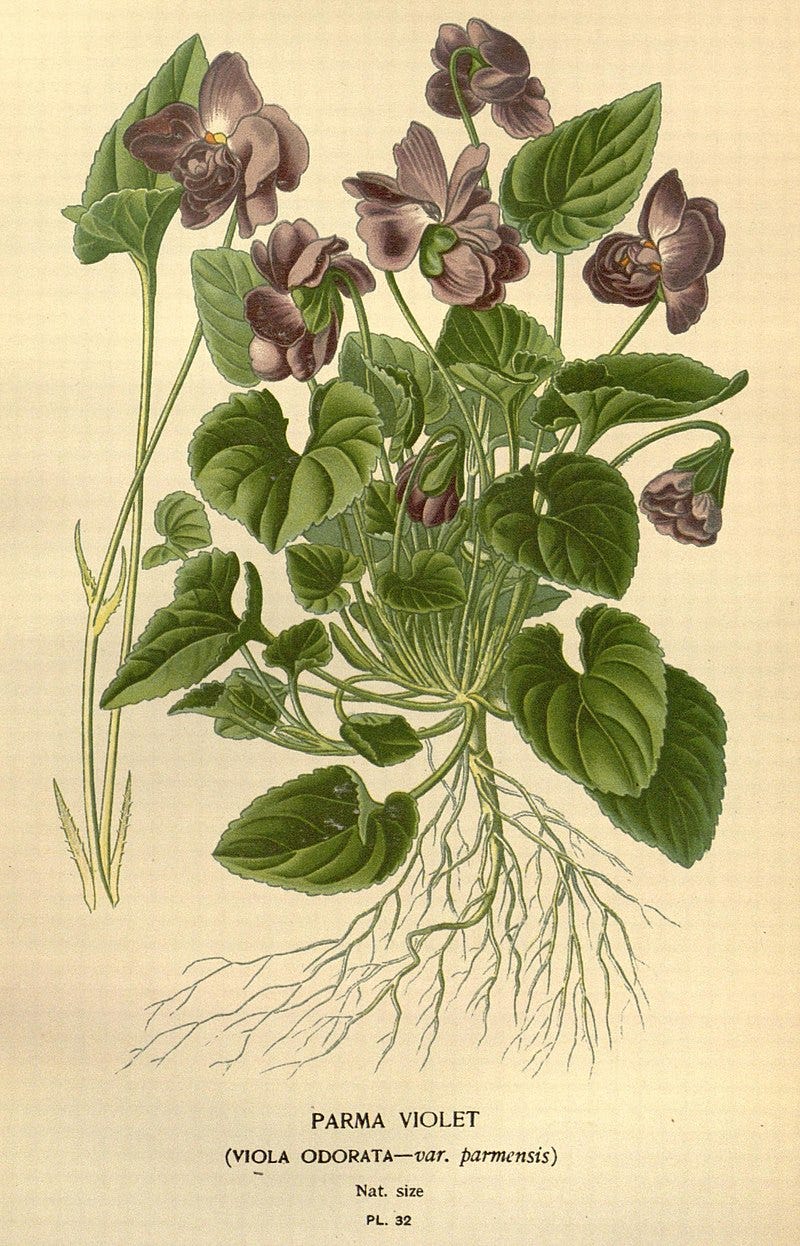February Plant of the Month: Parma Violet
Delicate and diminutive, Parma violets may seem too old-fashioned to include in a modern garden, but their fragrance and beauty should not be overlooked.
Violets are God’s apology for February.
—Barbara Johnson
For such a simple flower, there are two things about Parma violets that are rather confused. For starters, one might think that having a location attached to the name would indicate that that location is the plant’s native range. Certainly, Parma violets are native to Parma, Italy, right? Sorry, no. Contemporary Parma violets mostly likely descended from violets growing in the area of Constantinople (now Istanbul) as documented all the way back to the 16th century. By the 18th century the violets growing in Naples, Italy were said to have come from Portugal, brought by the Bourbon royal family. From Naples, the violets spread to Parma where the modern moniker attached.
The other confusion surrounding Parma violets is their botanical classification. I have had a devil of a time trying to nail down the species that they belong to. The genus Viola has hundreds of species in it. Often you’ll see Parma violets identified as Viola odorata; one source tagged it as Viola odorata var. parmensis. Another source has traced them genetically to Viola alba Besser subsp. dehnhardtii. I cannot confirm which is correct. I can only warn that if you’re shopping for Parma violets, be sure to look for a specific mention of “Parma” somewhere in the description.
While Parma violets may be native to Turkey and Italy, they were most commonly cultivated in France and the U.K. in the 19th century, and then coming to U.S. nurseries in New England and the San Francisco area. Their popularity grew and grew into the early years of the 20th century but by the end of World War I, they seemed to fall out of favor. Don’t ask me why—I think they’re lovely, easy-to-care-for little plants and I hope they catch on with gardeners once again.
Keep reading with a 7-day free trial
Subscribe to Lost in the Weeds to keep reading this post and get 7 days of free access to the full post archives.




